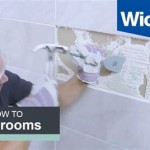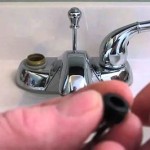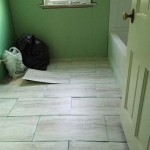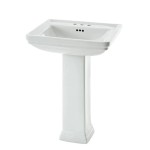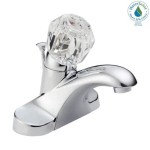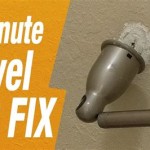How To Remove Mold From Walls In Bathroom
Bathrooms, by their inherent function, are prone to moisture. This moisture, coupled with warmth and organic materials found in paint, drywall, and grout, creates an ideal breeding ground for mold. Mold growth on bathroom walls is a common problem, presenting aesthetic issues as well as potential health hazards. Addressing mold promptly and effectively is crucial for maintaining a healthy and hygienic bathroom environment. This article outlines a comprehensive approach to removing mold from bathroom walls, providing detailed instructions and preventative measures.
Identifying Mold and Assessing the Problem
Before initiating any mold removal process, accurate identification is paramount. Mold can manifest in various colors, including black, green, brown, and white. It often appears as fuzzy or slimy patches on walls, grout, or caulk. A musty odor is another indicative sign of mold presence. While visual identification is often sufficient, professional mold testing can confirm the type of mold and the extent of the infestation, particularly in cases involving widespread or hidden mold growth.
Once mold is identified, assessing the scope of the problem is necessary. Minor surface mold growth, affecting a small area, can typically be handled with DIY methods. However, extensive mold infestations, particularly those covering large areas or penetrating deep into building materials, may necessitate professional remediation. Professional mold removal services possess the expertise, equipment, and protective gear to safely and effectively address significant mold problems.
Consider the underlying cause of the mold growth. Mold thrives in damp environments. Common causes of bathroom mold include inadequate ventilation, leaky pipes or fixtures, condensation, and poor insulation. Addressing the source of the moisture is essential to prevent future mold recurrence. Ignoring the root cause and solely focusing on surface cleaning will only lead to temporary relief.
Essential Safety Precautions
Mold exposure can pose health risks, particularly for individuals with allergies, asthma, or compromised immune systems. Implementing safety precautions during mold removal is crucial to minimize potential health effects. These precautions include:
Personal Protective Equipment (PPE):
Wearing appropriate PPE is non-negotiable. This includes a respirator or N-95 mask to prevent inhalation of mold spores, gloves (preferably non-latex) to protect skin from contact with mold and cleaning solutions, and eye protection (goggles) to shield eyes from splashes.Ventilation:
Ensure adequate ventilation in the bathroom during the cleaning process. Open windows and doors to allow fresh air circulation. If natural ventilation is insufficient, use a fan to exhaust air from the bathroom to the outside.Isolation:
If possible, isolate the bathroom from the rest of the house to prevent the spread of mold spores. Seal doorways with plastic sheeting and tape to contain the affected area.
It is important to remember that even seemingly minor mold infestations can release a significant number of spores into the air. Taking these precautions will safeguard your health and prevent the spread of mold to other areas of your home.
Step-by-Step Mold Removal Process
The following steps outline the process of removing mold from bathroom walls. This method is suitable for addressing surface mold growth on non-porous surfaces. If the mold has penetrated deeply into porous materials such as drywall, professional remediation may be required.
Prepare the Cleaning Solution:
Several effective cleaning solutions can be used to remove mold. Options include:Bleach Solution:
Mix one part household bleach with ten parts water. Bleach is a potent disinfectant that effectively kills mold, but it can also discolor surfaces and release strong fumes. Use with caution and in well-ventilated areas.Vinegar:
Undiluted white vinegar is a natural mold killer. It is less harsh than bleach and safer for the environment. However, it may take longer to kill mold and may not be as effective on all types of mold.Baking Soda:
Create a paste of baking soda and water. Baking soda is a mild abrasive that can help scrub away mold, and it also has deodorizing properties.Commercial Mold Removal Products:
Various commercial mold removal products are available. Follow the manufacturer's instructions carefully when using these products.
Apply the Cleaning Solution:
Using a sponge or cloth, apply the chosen cleaning solution to the affected areas of the bathroom walls. Ensure that the mold is thoroughly saturated with the solution.Scrub the Mold:
Gently scrub the mold with a brush or sponge. Avoid using abrasive scrubbers, as they can damage the wall surface. For stubborn mold stains, allow the cleaning solution to sit on the surface for several minutes before scrubbing.Rinse the Surface:
After scrubbing, rinse the treated areas with clean water. Ensure that all traces of the cleaning solution are removed.Dry the Surface:
Thoroughly dry the cleaned surfaces with a clean cloth or towel. Prevent moisture accumulation, as this can encourage mold regrowth. Consider using a dehumidifier to further reduce moisture levels in the bathroom.Dispose of Materials:
Properly dispose of all cleaning materials, such as sponges, cloths, and brushes, in a sealed plastic bag. This will prevent the spread of mold spores during disposal.
Repeating the cleaning process may be necessary for persistent mold stains. If the mold returns after cleaning, it indicates an underlying moisture problem that needs to be addressed.
Preventing Future Mold Growth
Preventing mold growth is far more effective than repeatedly removing it. Implementing preventative measures can significantly reduce the likelihood of mold recurrence in the bathroom. These measures include:
Improve Ventilation:
Ensure adequate ventilation in the bathroom. Use the exhaust fan during and after showers and baths to remove moisture-laden air. If the bathroom lacks an exhaust fan, consider installing one. Opening windows and doors after bathing can also help to improve ventilation.Address Leaks Promptly:
Repair any leaky pipes, faucets, or showerheads immediately. Even small leaks can contribute to moisture build-up and create a favorable environment for mold growth.Control Humidity Levels:
Maintain a low humidity level in the bathroom. Use a dehumidifier to extract excess moisture from the air. Aim for a humidity level below 50%.Clean Regularly:
Regularly clean the bathroom, paying particular attention to areas prone to mold growth, such as grout, caulk, and shower curtains. Wipe down walls and surfaces after showering or bathing to remove excess moisture.Use Mold-Resistant Products:
When renovating or remodeling the bathroom, consider using mold-resistant building materials, such as mold-resistant drywall and paint. Mold-resistant grout and caulk are also available.Properly Insulate:
Ensure proper insulation in the bathroom walls and ceiling to prevent condensation. Condensation occurs when warm, moist air comes into contact with cold surfaces. Properly insulating the bathroom can help to maintain a consistent temperature and reduce condensation.
By consistently implementing these preventative measures, you can significantly reduce the risk of mold growth in your bathroom and maintain a healthy and hygienic environment.
Furthermore, carefully inspect the bathroom regularly for any signs of moisture or mold. Early detection and prompt action can prevent minor problems from escalating into major infestations. Pay close attention to areas around the shower, toilet, and sink, as these are particularly susceptible to moisture accumulation.

How To Remove Mold From Walls True Value

How To Get Rid Of Mold On Bathroom Walls Family Handyman

How To Get Rid Of Mold In The Shower On Bathroom Walls Clorox

How To Get Rid Of Mold In Bathroom 2024 Tips From Puroclean

How Do You Get Rid Of Mould On Bathroom Walls Igloo Surfaces

How To Remove Mold From Bathroom Walls 6 Cleaning Tips

The Ultimate Guide On How To Clean And Get Rid Of Mold Pro Housekeepers

Bathroom Ceiling Mold Removal When To Clean Call Branch Environmental

A Handful Of Ways To Remove Mold On Bathroom Walls Clean Water Partners

The Ultimate Guide On How To Clean And Get Rid Of Mold Pro Housekeepers
Related Posts
